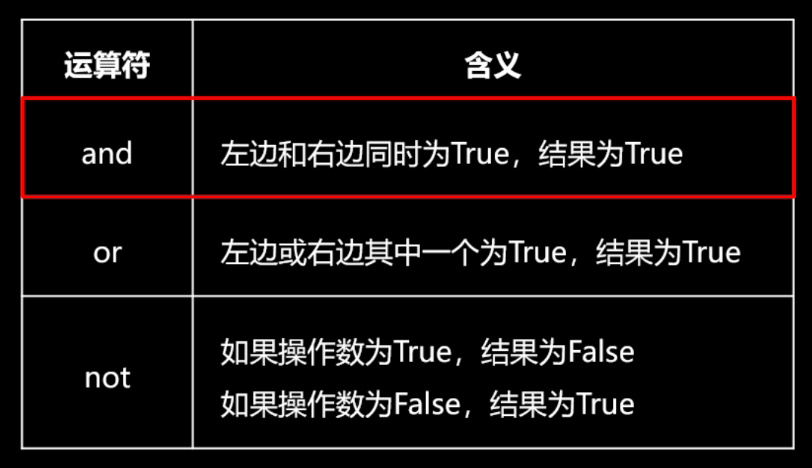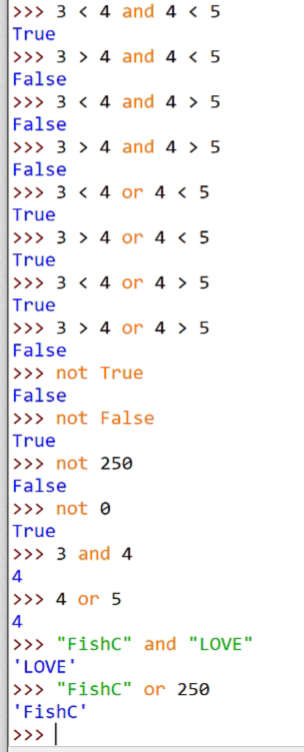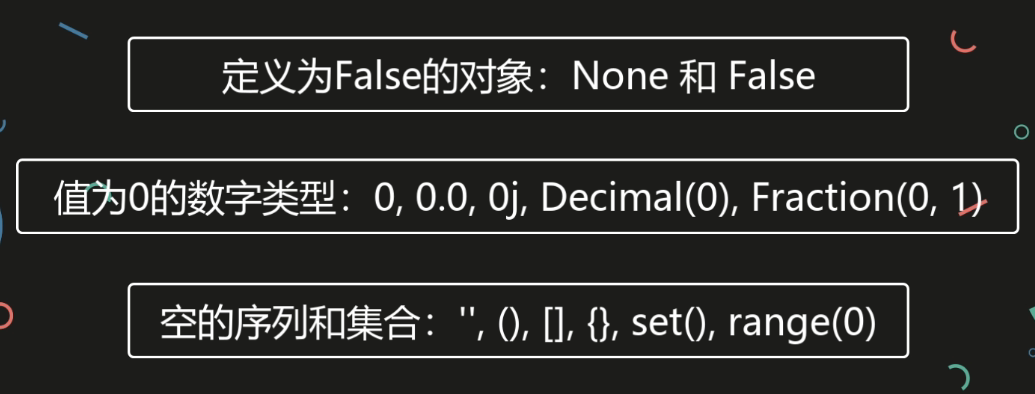在Python中,布尔类型只有True和False两种情况,也就是英文单词的“对”与“错”。
bool()
使用bool()可以直接给出一个ture或者false的结果。
bool(" ")Truebool("false")Truebool(1)Truebool(250)Truebool(True)Truebool(true)Traceback (most recent call last):File "<pyshell#7>", line 1, in <module>bool(true)NameError: name 'true' is not defined. Did you mean: 'True'?
bool(False)Falsebool(false)Traceback (most recent call last):File "<pyshell#8>", line 1, in <module>bool(false)NameError: name 'false' is not defined. Did you mean: 'False'?bool(0)Falsebool()Falsebool("")Falsebool(0.0)Falsebool(0j)False
应用
bool(250 > 5)Truebool (5 > 250)False
bool()的返回的值可以直接给到if或者while语句用于判断
if bool(520 > 5):print("520比5大!")else:print("520不比5大!")520比5大!
隐藏
True == 1``False == 0其实两个布尔值对应的就是0和1。
True == 1TrueFalse == 0TrueTrue + True2True * 22True + False1
逻辑运算符
and``or``not与或非
逻辑运算符的运算对象为布尔类型的对象。
有了逻辑运算符,我们就可以将多个布尔值合并在一起运算返回布尔值。



